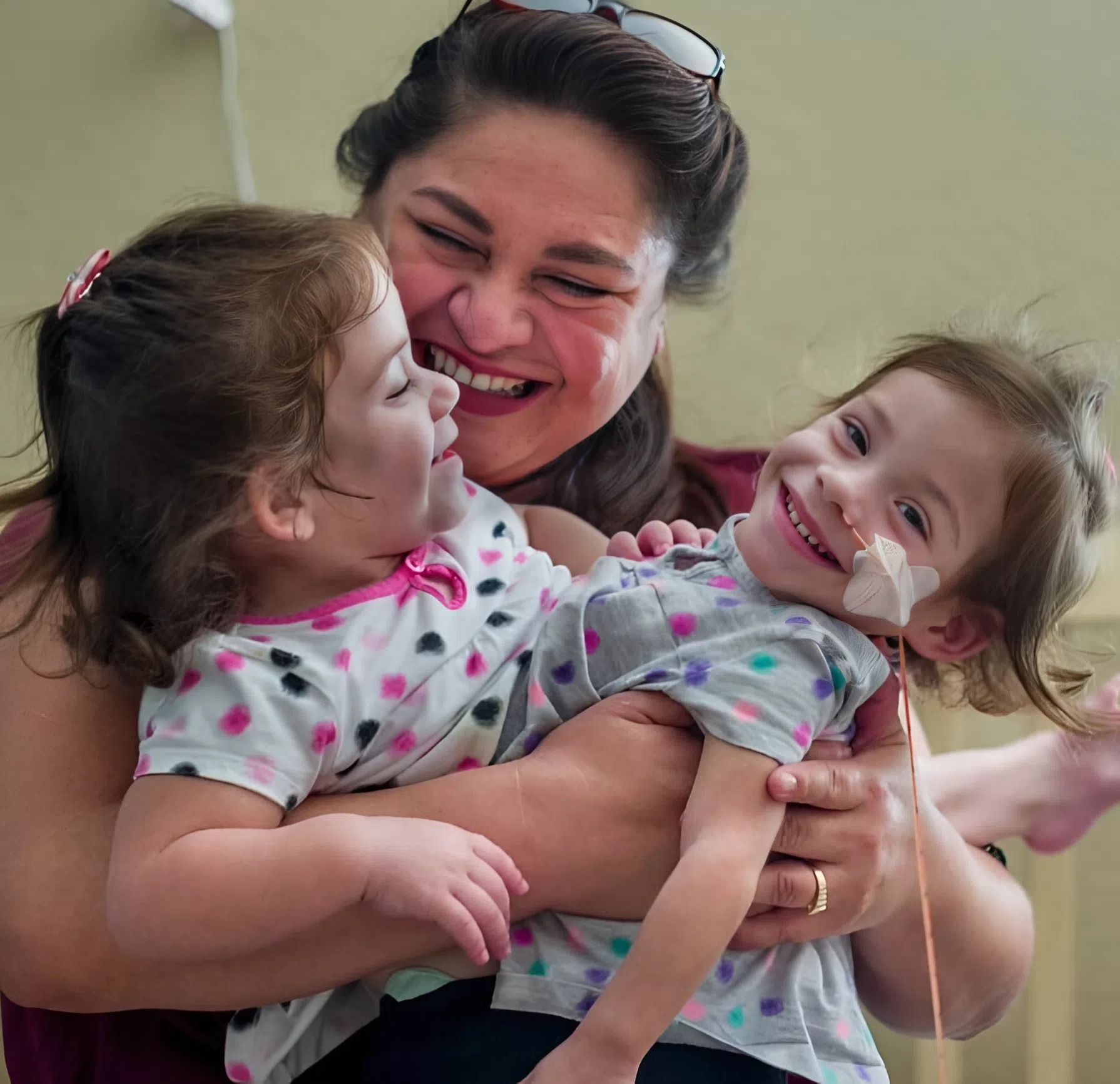The twin sisters were born joined at the chest, sharing vital organs — here’s an inspiring look at how their lives transformed after separation.
Erika and Eva Sandoval’s story begins in August 2014 in California, where they were born as conjoined twins fused from their chest down to their pelvis. Their unique condition presented a blend of hope and uncertainty, as doctors, parents, and specialists faced an enormous challenge that few had ever encountered. From the very first moments, it was clear that their bond was unlike any other — connected physically in ways that made separation seem nearly impossible, yet it was also clear that their chance at an independent life depended on the impossible becoming possible.
Their bodies were intertwined so closely that they shared several vital organs. Beneath their joined chest lay a single liver, one digestive system, one bladder, and even one uterus — a marvel of nature, but also a tremendous medical challenge. Alongside this, the twins had three legs between them: one shared leg in the middle and one leg on each side belonging to Erika and Eva respectively. While they each had their own spines, hearts, and lungs, the shared organs and physical connection meant they could only move and function as one.
The doctors’ task was daunting. The twins’ condition demanded extraordinary expertise and precision because even the smallest misstep during separation could result in tragedy. For years, Erika and Eva’s health and growth were closely monitored by a dedicated team of specialists who waited patiently for the moment their bodies would be ready for such an extraordinary operation.
In December 2016, when the twins turned two, the medical team at Stanford Children’s Hospital decided it was time. What followed was an unprecedented eighteen-hour surgery involving more than fifty medical professionals. The operating room was filled with the coordinated efforts of surgeons, anesthesiologists, nurses, and specialists all working in harmony to carefully separate the twins’ internal organs, blood vessels, and tissues. Each step was a delicate dance — every movement crucial to ensuring that both Erika and Eva would be left with fully functional, independent bodies.
The surgery was only the beginning of a much longer journey. Post-operation, Erika and Eva faced a grueling rehabilitation process that tested their courage and determination every day. They had to relearn the most basic skills — sitting up, crawling, standing, and walking — all while adjusting to the challenges of their new bodies. With the support of their family and medical team, they began to build lives full of possibility.
Now, at ten years old, Erika and Eva lead active, joyful lives. Each girl uses a prosthetic leg to walk and a wheelchair when they need extra support. They attend school like any other children, make friends, and participate in creative activities such as drawing and painting. Their laughter fills their home, a testament to their incredible resilience and spirit.
Their parents often speak with pride and amazement about the extraordinary bond between the sisters. Despite being physically separated, Erika and Eva remain deeply connected. They share an unspoken understanding, able to sense each other’s emotions and thoughts across distances. This connection is a beautiful reminder that their unity goes far beyond the physical — it’s rooted in an enduring love and the shared will to thrive.
Erika and Eva’s journey is more than a medical miracle; it is a powerful story of hope, courage, and the strength of family. Through every obstacle, the twins have shown that love and determination can overcome even the most daunting challenges. Their lives inspire all who hear their story — a shining example of what can be achieved when humanity’s compassion and innovation come together.
